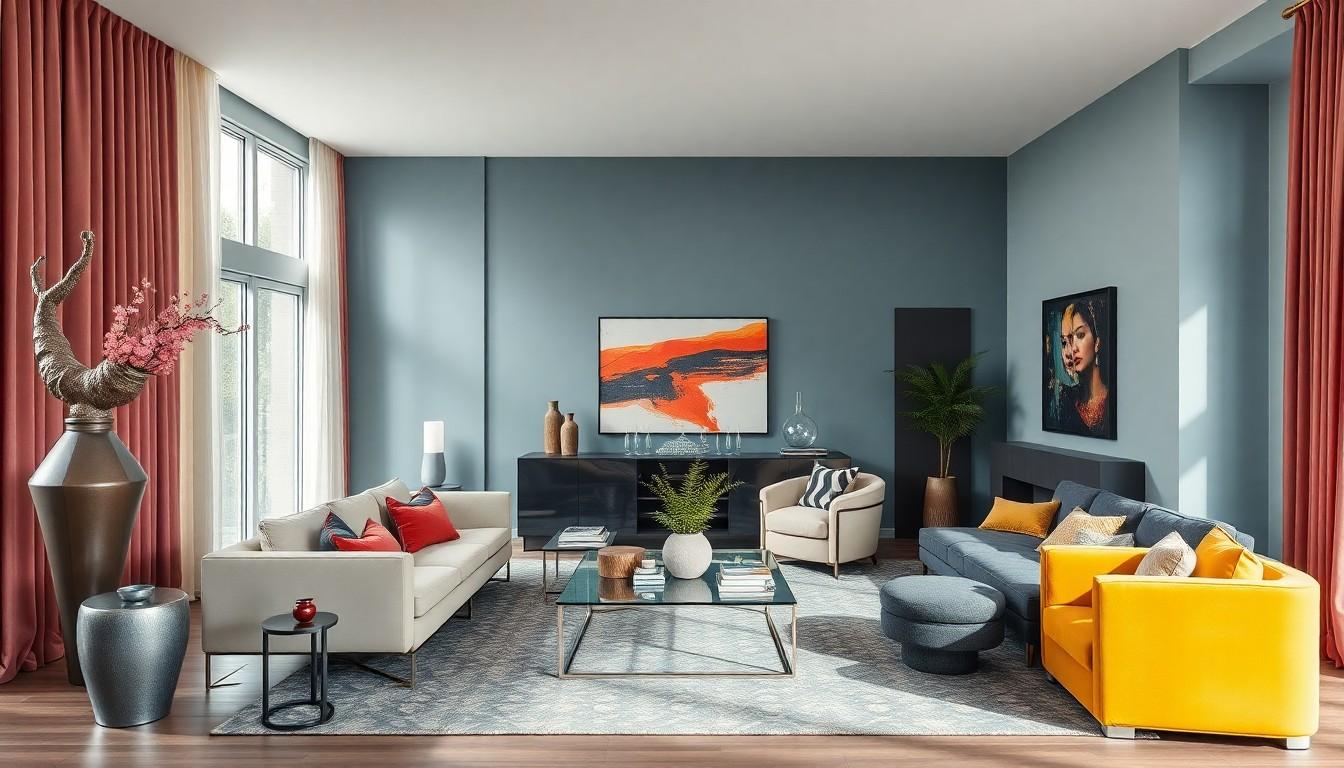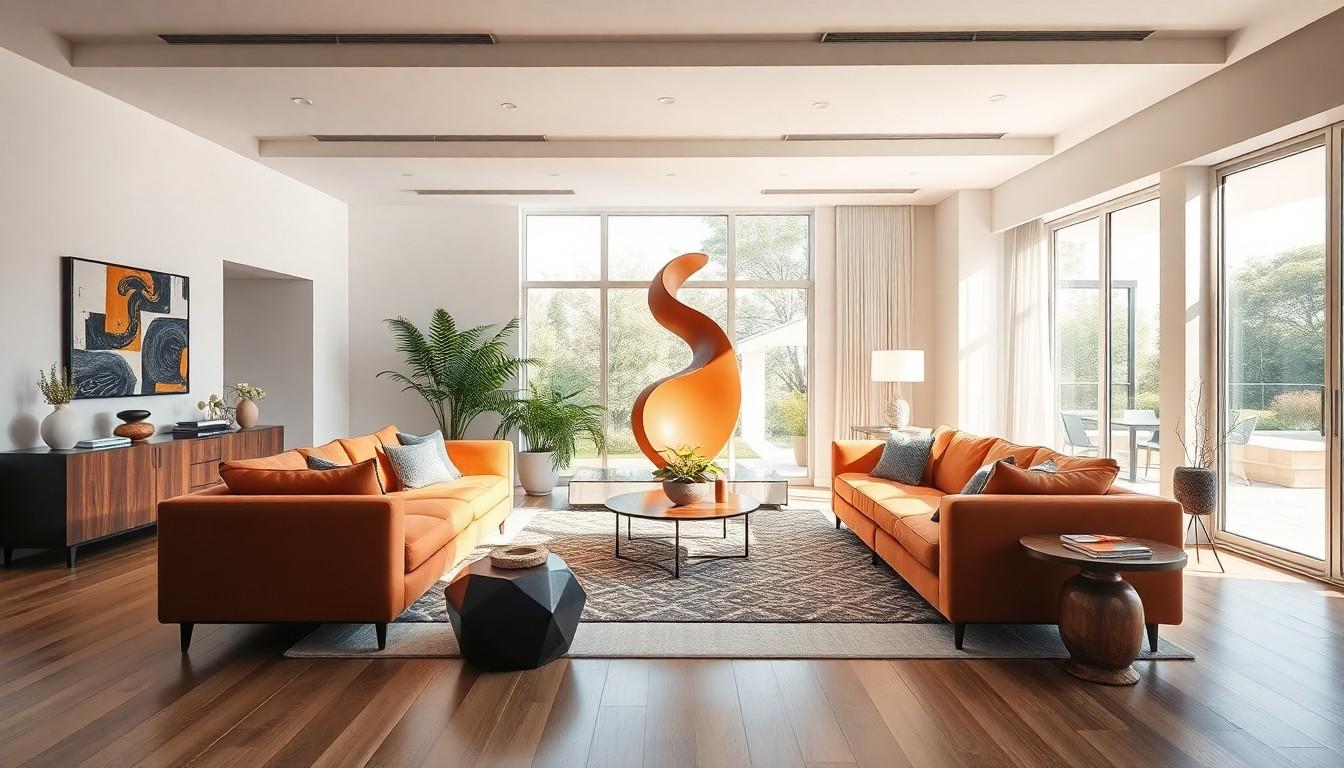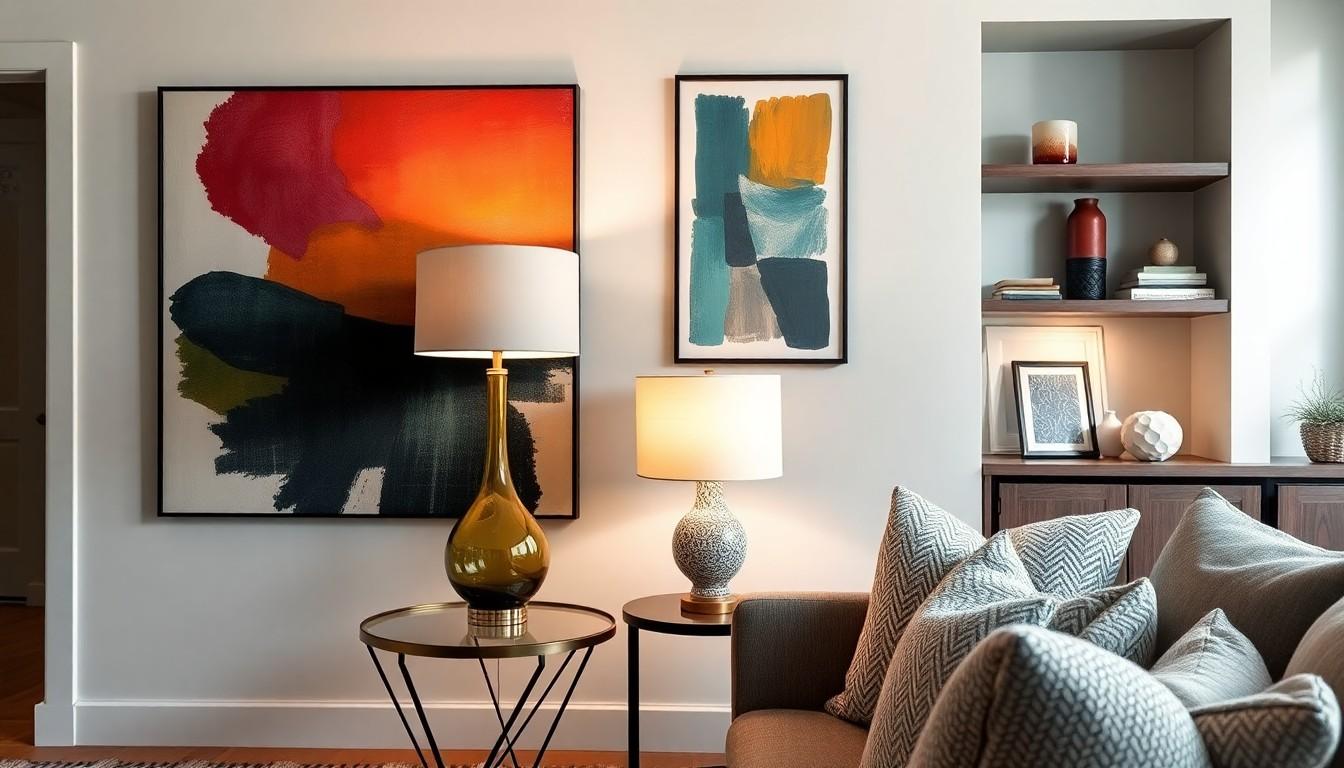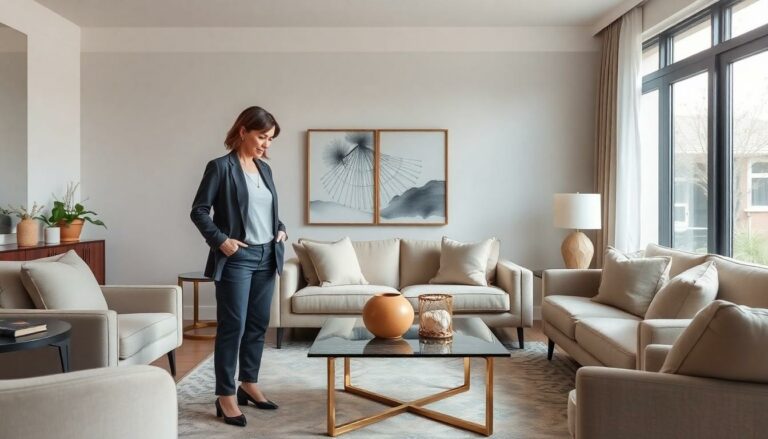Asymmetrical balance in interior design is like that quirky friend who always knows how to keep things interesting. It’s the art of creating harmony without the need for perfect symmetry, proving that sometimes chaos can be just as chic. Imagine a room where a bold, oversized lamp cozies up next to a delicate vase—this playful contrast invites curiosity and sparks conversation.
Understanding Asymmetrical Balance Interior Design
Asymmetrical balance in interior design creates harmony through contrasting elements. This design approach achieves a sense of equilibrium without relying on perfect symmetry.
Definition and Key Principles
Asymmetrical balance involves arranging different objects with varying sizes, shapes, and colors to create visual interest. The focus centers on achieving equilibrium through the strategic placement of these components. This design uses principles such as contrast and scale to guide the viewer’s eye. Unconventional combinations, like a large artwork alongside smaller decorative items, exemplify this method. Designers often emphasize focal points, creating layered spaces that invite exploration.
Importance in Interior Design
Utilizing asymmetrical balance adds uniqueness to interior spaces. It engages viewers, capturing attention and sparking conversation through unexpected pairings. This approach fosters creativity, allowing spaces to reflect individual personalities and tastes. Functionality interplays with aesthetics, ensuring rooms remain practical while still captivating. Balanced designs in home offices, living rooms, and other areas promote comfort and usability, enhancing the overall experience in these environments.
Benefits of Asymmetrical Balance


Asymmetrical balance enhances interior spaces by creating a sense of harmony that captivates. Various benefits stem from this unique design approach, notably in its ability to transform environments.
Visual Interest and Dynamic Spaces
Visual interest thrives in asymmetrical balance; it draws the eye around a room. Dynamic arrangements spark curiosity, encouraging movement and exploration. Utilize contrasting elements, such as a large sculpture paired with lighter furnishings, to breathe life into a space. Unique shapes and colors engage viewers, fostering an inviting atmosphere. Create focal points through unexpected combinations, ensuring every corner reveals something intriguing. Asymmetrical balance eliminates monotony, making each viewing experience feel fresh and exciting.
Flexibility in Design Choices
Flexibility defines the principles of asymmetrical balance, allowing various styles to coexist. Designers can mix furniture that varies in size and shape effortlessly, accommodating individual tastes and needs. This approach encourages creativity, enabling homeowners to curate spaces that reflect their personalities. Experimentation becomes essential, as each choice contributes to the overall aesthetic. Asymmetrical designs promote a playful interaction between items, resulting in personalized environments without strict guidelines. Ultimately, the method showcases diversity, proving functionality can harmonize with artistic expression.
Techniques for Achieving Asymmetrical Balance
Achieving asymmetrical balance in interior design involves strategic choices in color, texture, and layout to foster a dynamic atmosphere. Various techniques enhance this creative approach.
Color and Texture Variation
Color and texture play crucial roles in establishing asymmetrical balance. Bold colors can contrast with softer hues, enriching the visual landscape. Textures also contribute; pairing a smooth surface with a rough one creates depth. For instance, a glossy ceramic vase alongside a woven textile encourages interest. Using distinct patterns adds richness to the space, drawing the viewer’s eye. Visitors may feel captivated by the interplay of elements, prompting further exploration of the room.
Furniture Arrangement and Layout
Furniture arrangement significantly influences asymmetrical balance. Strategically placing larger items off-center allows smaller pieces to balance them, creating a harmonious layout. For example, a spacious sectional sofa can be paired with a slender accent chair to maintain equilibrium. Allowing space between furnishings promotes a sense of flow, inviting movement. Utilizing different furniture heights contributes to the overall visual interest, ensuring the eye travels naturally across the room. These considerations enhance the overall aesthetic, making the space feel curated and inviting.
Common Mistakes to Avoid
Asymmetrical balance can enhance interior design, but several common mistakes can disrupt the intended harmony.
Overloading with Elements
Using too many elements can overwhelm a space. Designers often fill areas with numerous decorations, which can lead to visual chaos. Prioritizing fewer but impactful items maintains focus and encourages the eye to roam naturally. Larger pieces can serve as anchors, while smaller decorations add complexity without cluttering the visual field. Adopting a minimalist approach contributes to a well-balanced look, allowing each element to shine while still working together cohesively. Aim for thoughtful combinations, letting each piece breathe within its context.
Neglecting Functionality
Oftentimes, aesthetics overshadow functionality in design choices. However, beautiful arrangements must also serve a purpose. Functionality plays a crucial role in maintaining balance and usability. For instance, selecting items that enhance daily activities fosters a comfortable environment. When arranging furniture, consider how each piece facilitates movement and interaction within the space. Choosing decorative items that provide practical storage solutions can create a harmonious blend of beauty and practicality. Ensuring that every element serves a dual role contributes to the overall success of asymmetrical design.





